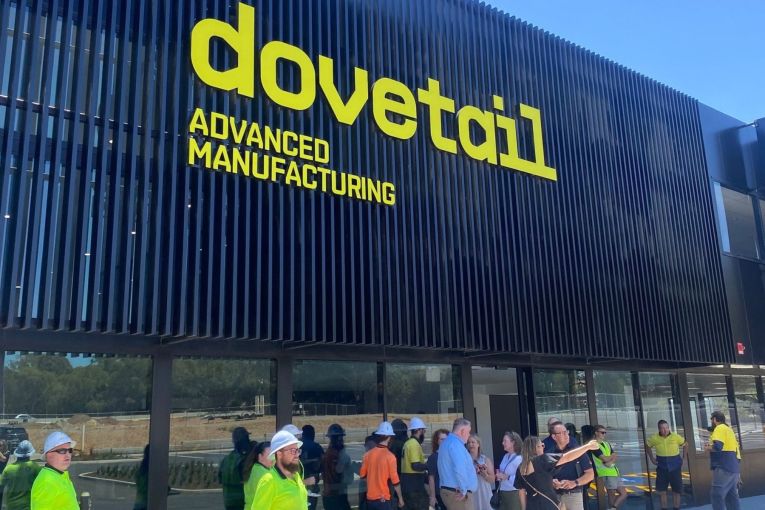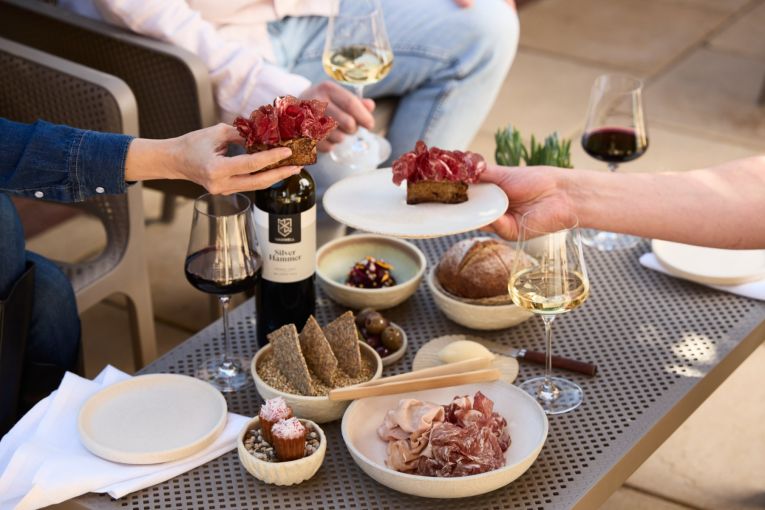10 minutes with… Southern Design Group co-CEOs Emily and Steve Bradley
Southern Design Group co-CEOs Emily & Steve Bradley took over Traditional Brass Co. in 2015 from Emily’s parents and rebranded it into what it’s known as today. Business Insight spoke to the pair about inheriting the family legacy and the value of collaboration.

Tell us about your journey with Southern Design Group and the process of taking it over from Emily’s parents.
Emily Bradley: Southern Design Group’s story began in 1982 when my parents, Graham and Denise Duff, founded Traditional Brass Co. in Adelaide. They started the business out of necessity – they were restoring their own home and couldn’t find authentic architectural fittings, so my dad crafted his own. What began as a small, family-run business quickly grew into a trusted name in heritage hardware.
Steve Bradley: When Emily and I joined the business in 2015, we saw an opportunity to build on that foundation while pushing the industry forward. We didn’t just want to maintain what had already been done – we wanted to rethink how architectural hardware could be designed, produced, and integrated into spaces. In 2019, we launched Southern Design Group as an umbrella brand, introducing Bankston as a design-led offering alongside TradCo, and later, Iver. Our vision has been to elevate hardware as an essential design element, placing it alongside lighting, furniture and other curated objects within a space.
How have you transformed the company since taking it over?
The biggest shift has been repositioning architectural hardware as a central design feature rather than a last-minute selection. We expanded from a single heritage-focused brand to a multi-brand company with three distinct offerings – Bankston, Iver, and TradCo – each catering to different design aesthetics and functional needs.
When we founded Bankston in 2019, it was about reimagining what hardware could be. We’ve worked with some of the world’s best architects and designers to create hardware that is sculptural, tactile and deeply considered.
Collaborations like Casts by Edition Office and Hemispheres by Civilian explore new materiality, pushing hardware beyond the purely functional. At the same time, we have remained grounded in craftsmanship and quality – ensuring that every piece, whether contemporary or heritage-inspired, is made to the highest standard.
You might like
What’s your secret to success?
Respecting our roots while always looking ahead.
Southern Design Group began as a small backyard family business and has grown to now employ close to 100 South Australians. Quality, craftsmanship, and a strong sense of integrity remain at the heart of every decision.
Surrounding ourselves with a great team and working to truly understand the needs of the target audiences of each of our brands – whether that be respecting the heritage detailing of a space with TradCo; making the selection and purchase of beautiful, high-quality hardware seamless and easy with Iver; or testing the boundaries of hardware design with Bankston.
We also work with various creatives to challenge preconceptions and create pieces that enhance the way people experience space. We constantly ask ourselves, “How can this be better? How can this be more refined?” That curiosity and dedication to pushing boundaries have helped us stand out in an industry that is often overlooked in the broader design conversation.
Southern Design Group works in quite a niche sector – what do you specialise in, and how do you stand out?
We specialise in architectural hardware that merges craftsmanship with contemporary design thinking.
With Bankston, in particular, we have moved beyond traditional hardware manufacturing and into design-led, collaborative exploration. Rather than treating hardware as an afterthought, we see it as an integral component of a design narrative. Our collections experiment with materials, finishes and sculptural forms to create objects that feel intentional and refined.
Stay informed, daily
Sustainability is also a major focus – we work with materials like infinitely recyclable brass, FSC-certified wood and recycled alloys to ensure our products are long-lasting and environmentally responsible.
What are some major trends in the finishing trade that you’re tapping into or keeping an eye on?
Architectural hardware is undergoing a transformation. The industry is shifting towards more expressive, sculptural forms, where hardware isn’t just functional—it’s a statement. We’re seeing more raw, textural finishes, embracing the imperfections of cast metals and hand-worked surfaces.
Sustainability continues to be a major driver in how we approach design. We’ve always worked with high-quality, durable materials like brass, but we’re also pushing forward with responsible sourcing and production. Our recent collections have incorporated sustainably harvested timber and 100 per cent recycled alloys, and we’re continually refining our processes to reduce environmental impact.
Collaborations are core to your business’ success. Why does that model work, and is it for every business?
Collaboration is central to Bankston’s design philosophy in particular. We view the relationship between hardware and architecture as an opportunity to transform functional objects into thoughtfully reimagined design elements.
Partnering with architects and interior designers allows us to push the boundaries of both form and function. From initial sketches and 3D models to prototypes, we work closely with our collaborators to ensure each piece meets both aesthetic and practical requirements. This process enables us to create hardware that not only integrates seamlessly into its environment but also challenges conventions, elevating the overall design and inspiring new ways to experience space.
Beyond aesthetics, collaboration allows us to consider hardware within a broader architectural context, ensuring it responds to the needs of both designers and end users.
What are some challenges in your specific sector that you’re working on overcoming?
One of the biggest challenges is changing the perception of hardware. While lighting, furniture, and textiles have long been seen as critical design elements, hardware is still too often treated as purely functional. We want to shift that thinking, showing how well-designed hardware can shape the way people perceive and interact with a space.
Sustainability is another challenge we are constantly working on. While we’ve made great progress with recycled materials and responsible sourcing, we know there’s always room to do better. We’re actively selecting manufacturers with strict environmental certifications and refining our processes to further reduce waste.
As we expand internationally, maintaining the craftsmanship and quality that define Southern Design Group is also a priority. Growth is exciting, but it must be done in a way that stays true to our values – ensuring that every product remains thoughtfully designed and beautifully made.









